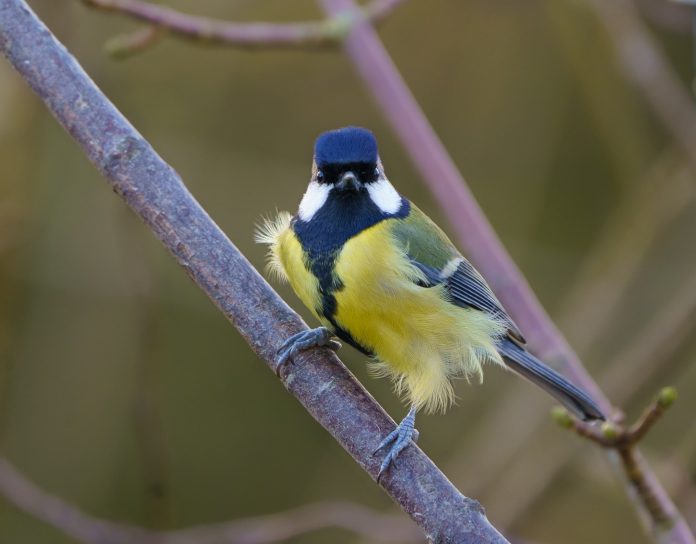Smart birdhouses measure effect of light pollution
Can a great tit turn into a night owl?
There’s around five of them close to Nijenborgh. Another two or three are hanging in front of the Aletta Jacobs hall. There’s another one facing the beach volleyball court close to the ACLO sports centre, and more can be seen in the trees.
One hundred great tits and bluetits have found their home in one of the many birdhouses spread around the Zernike campus. But what the birds don’t realise while they diligently build their nests and lay their eggs is that they are being remotely monitored by biologists for a Science LinX pilot project.
Shadow and light
‘Look!’ says biologist Barbara Helm, pointing to one of the birdhouses across the bus stop. ‘That one there is hanging nicely in the shadow.’ The great tits who occupy a birdhouse closer to the Energy Academy are not so lucky, though: they are much more exposed to artificial light at night. And birds close to the tennis courts have it even worse, because of the lights that flood the fields.
But that is exactly the way Helm, her PhD student Aurelia Strauss, and ScienceLinx project leader Theo Jurriens want it. ‘We want to know how nature copes with all the light that we humans produce’, Helm says.

Light pollution that blocks humans from seeing the stars at night also affects the behaviour of birds, bats, spiders, insects, and plants. ‘Its effects on starlings in London have been known ever since the 1930s’, Helm says. But only now are the consequences beginning to be understood.
Entire ecosystems can be harmed. ‘Some species hunt at night. When their behaviour changes, that affects others and the effects build up.’ Take moths that are being sucked in by lights ‘like a vacuum cleaner’. They either just die or provide a midnight feast for foraging spiders and bats. ‘And this in turn reduces the pollination of plants.’
Night owls
The birdhouses – equipped with motion detectors and lux meters – are just the beginning of research that tries to highlight the effect of light pollution on the nesting behaviour of the great and bluetits. Strauss wants to know more about different chronotypes in birds. Because research suggests that they, too, appear to have night owls and early birds. ‘And since the light constantly shines on these birdhouses, the birds might take flight earlier and come home later’, she says.
Helm is also interested in the effects of artificial light at night on the physiology and health of individual birds. Helm: ‘Even really low levels of light at night trigger the reproductive stage, change hormones in the body, and even change the expression of genes in the brain’.
New prototype
The birdhouses were developed by Theo Jurriens, who is also the initiator of the UG Discovery Bus that tours schools to get children interested in science, and of the citizen science project that helps people build their own particle matter gauges. ‘When I was stuck at home, recovering from heart surgery in 2015, I built a house with a camera and I was fascinated by the behaviour of this beautiful bird’, he says.
Now that the birdhouses are actually being used, he’s already looking to make them more advanced. There’s a new prototype with a temperature sensor that is being tested in Uffelte, where Jurriens lives. It even has a traffic light system that can tell whether it gets too hot inside, so people can put up shade. ‘Some volunteers have dozens in their gardens.’ The data those houses collect are displayed on the website slimnestkastje.nl.
Citizen project
If all goes well, the project may very well be expanded next spring to another big citizen science project at the UG. ‘Then we can have a “build your own smart birdhouse” project that everyone can partake in’, Jurriens muses.
‘It will generate awareness in people and provide us with important new information’, Helm agrees. ‘We scientists may use rigorous approaches, but if we collect data ourselves we’ll probably only do it at a few sites. With this system, people from across the country can contribute.’




